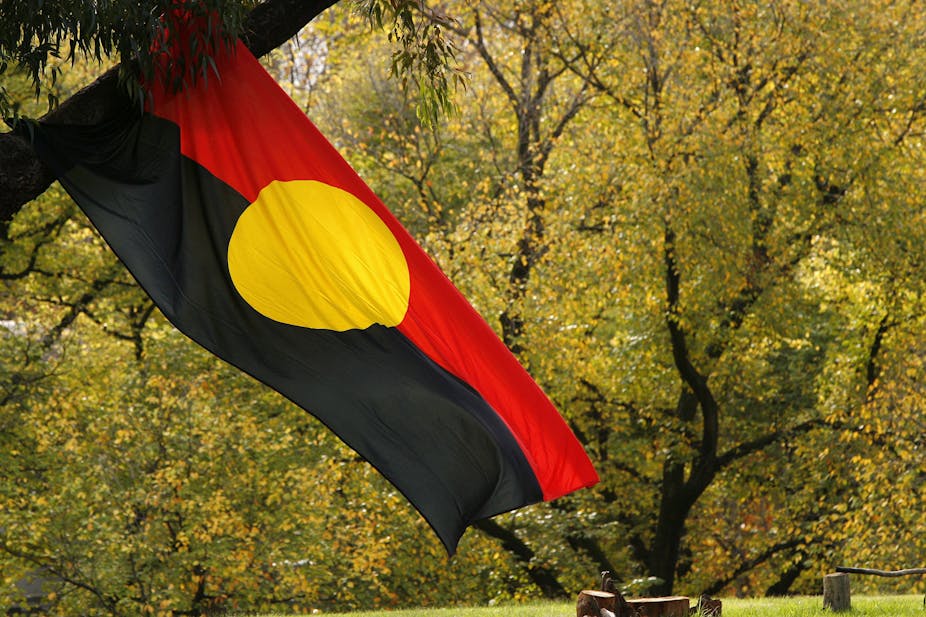The soon-to-be-released review of the Australian Curriculum was outlined by Education Minister Christopher Pyne as intended to address “fair criticism” that the curriculum was overly focused on “the way we’ve treated Indigenous Australians” at the expense of illustrating “the benefits of Western civilisation”.
As numerous commentators noted, a major source of such criticism was the appointed co-chair of the review, Kevin Donnelly.
While many defended the curriculum against claims of bias, there has been little evidence in the discussion of the way the Australian Curriculum represents Indigenous history.
The history curriculum claims to promote
understanding of the past and present experiences of Aboriginal and Torres Strait Islander peoples, their identity and the continuing value of their culture.
Yet close inspection of the history curriculum from Year 7 to 10 – the years in which history is compulsory at a secondary level – reveals that it fails in this objective.
What does the curriculum say about Indigenous history?
Despite political posturing on both sides of the debate, Indigenous history features infrequently in the secondary history curriculum.
Each year level contains an overview and three “depth studies” corresponding to a historical era, beginning with the study of the Ancient World in Year 7 and concluding with the Modern World in Year 10.
In Year 7, students investigate the “ancient past” of Australia from an archaeological perspective. In Year 9, students consider “the effects of contact (intended and unintended)” between “European settlers” and Indigenous peoples, including “massacres”, “the spread of European diseases”, “forcible removal of children” and “killing of sheep”. Later in Year 9, students investigate the experiences of Indigenous people during World War One.
Then there is the Year 10 “Rights and Freedoms” depth study, an investigation of “struggles for human rights” with a near-exclusive content focus on Aboriginal and Torres Strait Islander struggles.
Standing as the only sustained inquiry into the perspectives and historical agency of Indigenous people, this depth study also stands out for its misrepresentation of some of the most widely celebrated Indigenous political achievements. The fundamental problem is that this depth study characterises all Indigenous political struggle as a fight for civil rights, contrary to overwhelming historical evidence.
In addition to demands for civil rights (such as freedom of movement and equal treatment before the law), Indigenous political struggles have for centuries been fought over rights to land and self-governance.
In contrast to civil rights, these rights are premised on the unique status of Indigenous peoples in relation to the colonial state. They are collective Indigenous rights, not individual rights premised on citizenship.
Since the late 1960s, “self-determination” has been a prominent Indigenous political aspiration in Australia. Self-determination encompasses both land rights and self-governance, as land has been conceived as the economic (and in some cases spiritual) basis for Indigenous communities to be self-governing.
Civil rights focus masks Indigenous rights agenda
The first topic investigated in the “Rights and Freedoms” depth study is the 1948 United Nations Declaration of Human Rights. Here the curriculum fails to draw parallels with liberation struggles of oppressed Black and Indigenous communities worldwide, which are crucial to understanding the emergence of the Indigenous self-determination agenda.
The 1920s Australian Aboriginal Progressive Association drew heavily from the ideology and tactics of Marcus Garvey’s United Negro Improvement Association, while young Aboriginal activists in the 1960s were galvanised by the Black Power movement in the US.
The second topic in this depth study is the background to Indigenous struggles for rights and freedoms, “including the 1938 Day of Mourning and the Stolen Generations”. To really comprehend this topic, students would have to have prior knowledge of the widespread dispossession of Indigenous people and their confinement to state-run missions and reserves.
The depth study then jumps to the “US civil rights movement and its influence on Australia”. Next, students consider “the significance of [a number of landmarks in Indigenous political struggle] for the civil rights of Aboriginal and Torres Strait Islander peoples”. These landmarks include the “Mabo decision”, which was significant primarily in terms of land rights, not civil rights.
Equally perplexing is a reference to the UN Declaration on the Rights of Indigenous Peoples as an example of the “continuing nature of efforts to secure civil rights and freedoms”, given that this document is fundamentally concerned with the right of Indigenous peoples to self-determination.
What’s missing from the curriculum?
Many critical developments in Indigenous history with strong ties to global political trends are ignored in the curriculum. For example, the international Black Power movement was critical to the emergence of Aboriginal Community-Controlled Services and the birth of the Black cultural movement in the 1970s. These are still vitally important to Indigenous communities today.
The depth study’s silence on land rights is perhaps the most troubling, as the historic Mabo decision cannot be understood without the history of the land rights movement, from early frontier warfare, to the 1966 Wave Hill walk-off, to the 1972 Aboriginal Tent Embassy.
In light of its actual content, the Australian Curriculum’s numerous statements affirming the critical importance of Indigenous histories are rendered hollow and its conservative critics absurd.
When the review of the Australian Curriculum is finally released, debate needs to be informed by an understanding of its content, rather than its packaging. We need many voices to demand greater attention to Indigenous perspectives and some much-needed academic rigour.

